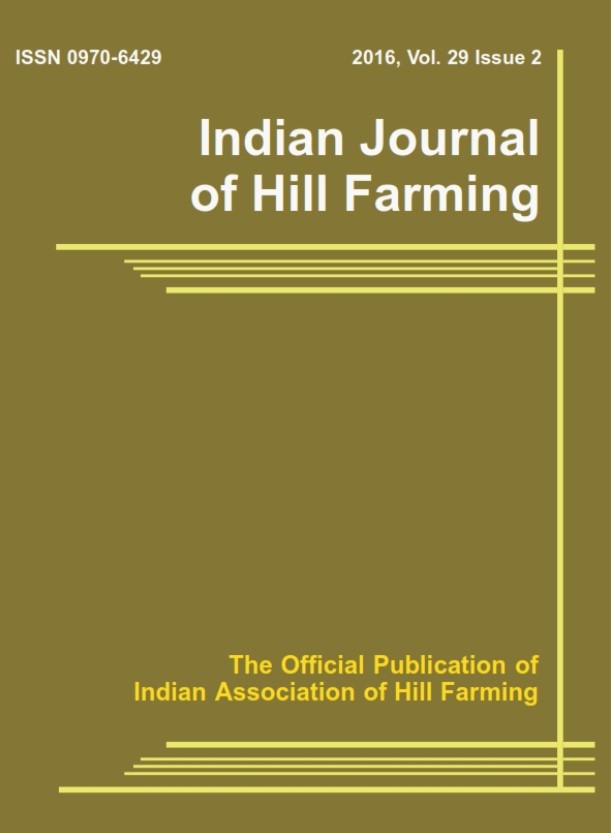Prevalence of Gastrointestinal Parasitic Infections in Livestock of Manipur
DOI:
https://doi.org/10.56678/Keywords:
Gastrointestinal, Parasites, Livestock, ManipurAbstract
Gastrointestinal (GI) parasitic infections in animals are responsible for considerable economic losses due to mortality in infected animals, decreased milk yield and reduced weight gain. Keeping in view of importance of GI parasitism in livestock, a study on GI parasitic infections in livestock of Manipur was carried out for a period of one year started from April, 2014 to March, 2015. For this a total of 359 numbers of faecal samples, of which 149 numbers from pigs, 158 numbers from cattle and 52 numbers from buffaloes, were collected from different places of Manipur. These faecal samples were examined for the presence of parasitic eggs/oocysts for detection of GI parasitic infections. Overall prevalence of GI parasitic infections among livestock of Manipur was 34.54%. Out of these, 32.88% faecal samples of pigs, 37.34% faecal samples of cattle and 30.76% faecal samples of buffaloes were found positive for different GI parasitic infections, either single or mixed forms. Microscopical examination of faecal samples of pigs revealed presence of Ascaris suum (40.81%), Strongly spp. (22.44%), Trichuris spp. (8.16%), Eimeria spp. (20.40%) and Isospora spp. (4.08%). Mixed infections with various GI parasites were also recorded in 4.08% samples. Examination of faecal samples of cattle revealed presence of eggs/ova of Strongyle spp. (35.59%), Amphistome(13.55%), Fasciola spp. (10.16%), Moniezia spp. (8.47%), Nematodirrus helvetianus (1.69%) and Eimeria spp (18.64%). Mixed infections with various GI parasites were also recorded in 11.86% samples. The eggs of Stronglyspp. (50.00%), Amphistomes (37.50%) and Fasciola spp. (12.50%) were recorded in the faecal samples of buffaloes. Nematodirus helvetianus, a nematode parasite of cattle, is being reported for the first time from cattle of Manipur.
Downloads
Published
Issue
Section
License

This work is licensed under a Creative Commons Attribution-NonCommercial-NoDerivatives 4.0 International License.




